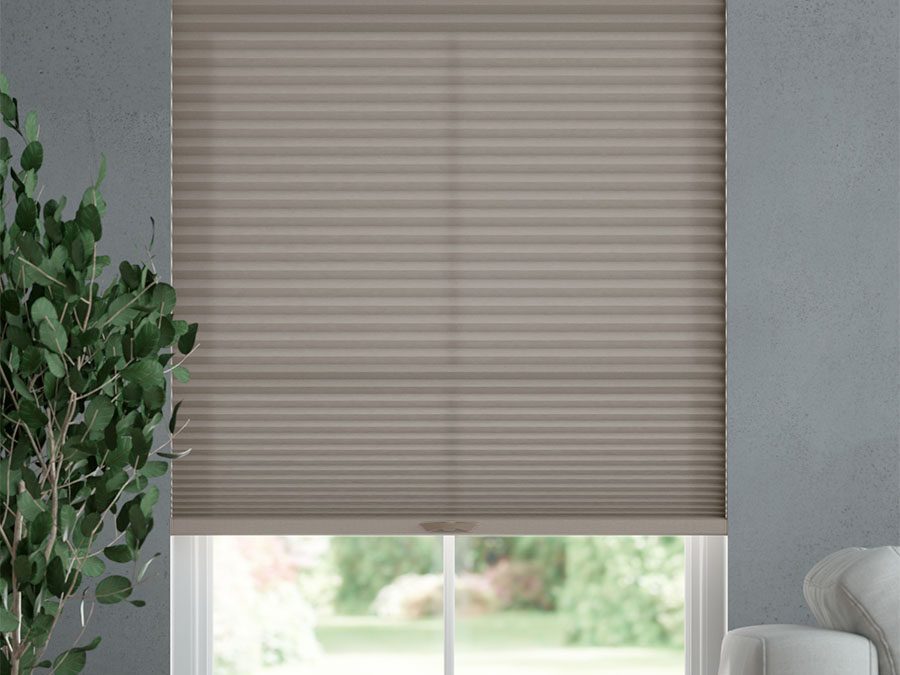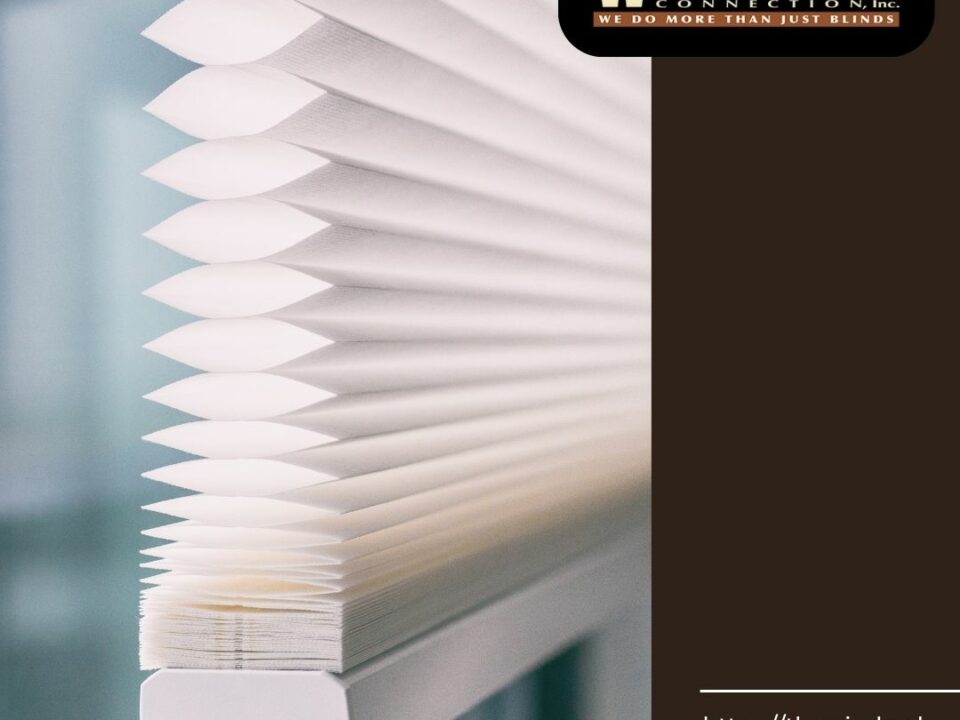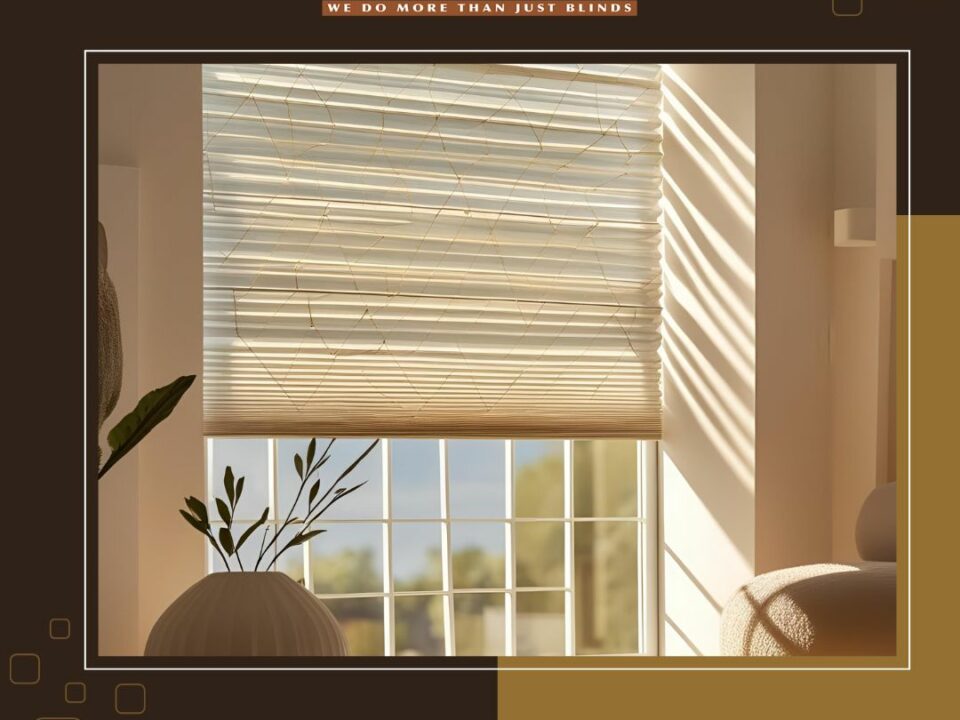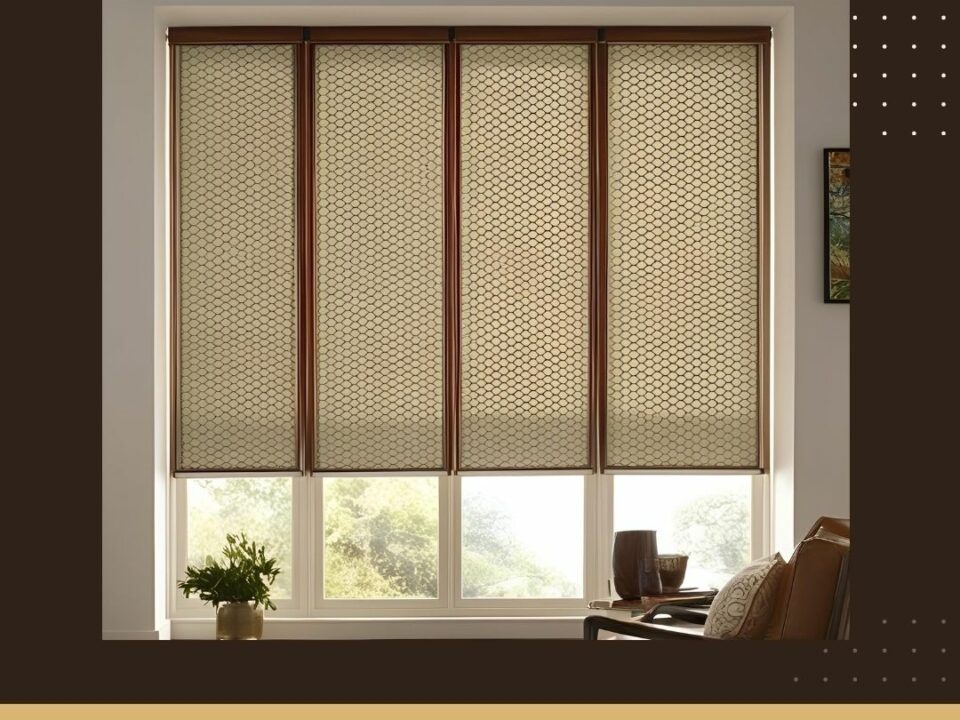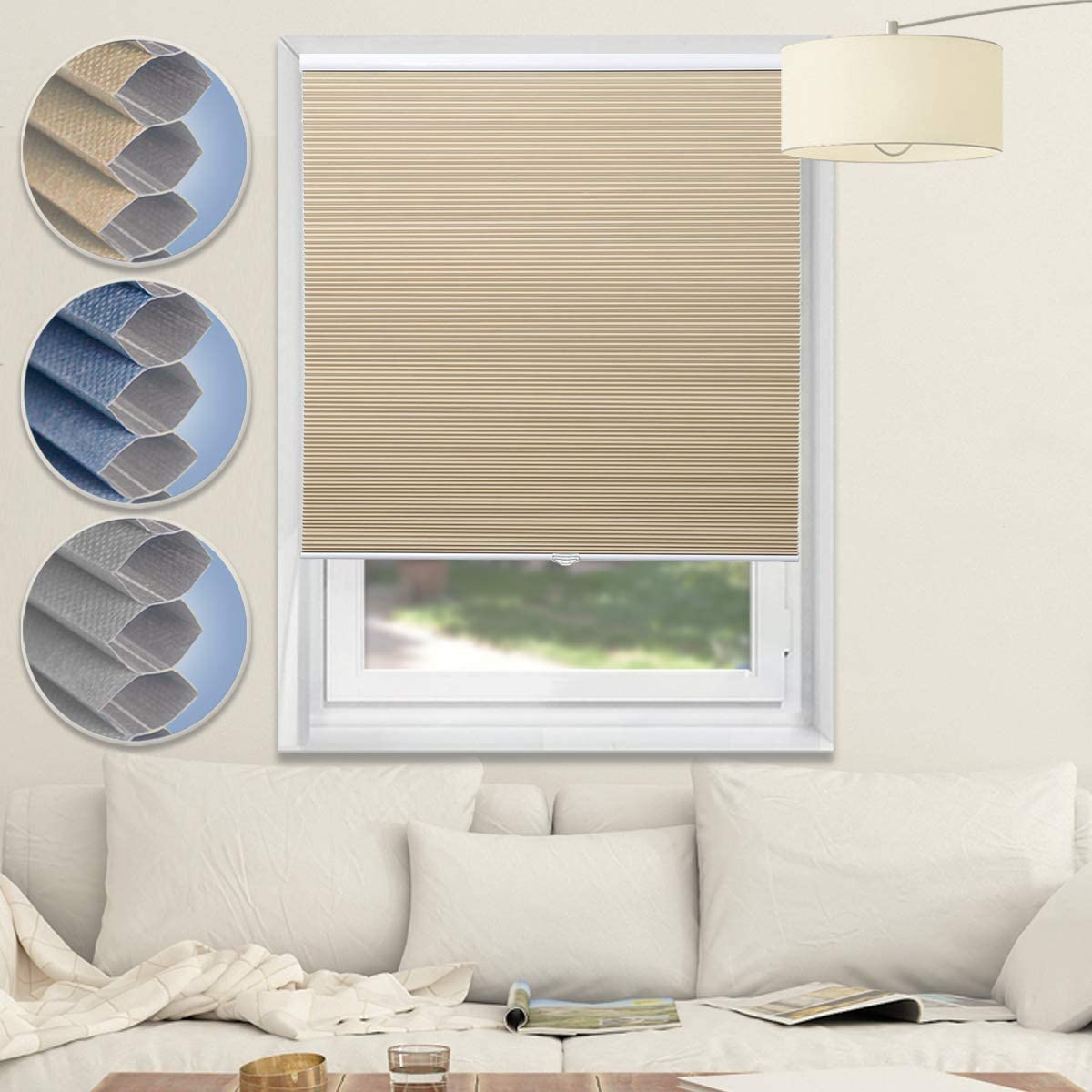
Honeycomb Blinds explained and why they work for All Seasons
November 9, 2022Honeycomb Shades: What are their Pros and Cons?
November 9, 2022Honeycomb shades are a somewhat modern invention, consisting of two layers of thin paper or fabric folded into honeycomb shaped cells that can be stacked nearly flat. Most honeycomb shades are raised and lowered using a drawstring attached to the top of the installment, however, there are some honeycomb shades that actually start at the bottom of the window and can be pulled up. These shades, known as “bottom-up” shades, are renowned for their ability to allow light in while still blocking the bottom portion of the window from outside view.
One of the greatest benefits presented by honeycomb shades compared to other styles is that these shades have a lot of thermal resistant properties and can almost double the resistance value of some windows! This means that less heat gets in during the summer and more is trapped during the winter. Honeycomb shades are made so thermally resistant because of the fact that air gets trapped in the space between the cells, forming a sort of barrier between the interior of the house and the window. For many people, this is a major factor in deciding to use honeycomb shades for large windows or in main areas of the house.
While these shades are great for many applications, there are a few notable drawbacks. Because they consist of a single piece of continuous fabric, there is no way to alter how much light gets through the shade other than by raising or lowering them. There are translucent fabrics available, but you’ll need to combine them with additional curtains if you want to have the option to block out more light.
Another potential drawback of using honeycomb-style shades is that many people dislike the paperlike appearance of the shades. It comes down to personal taste, but some would argue that these shades look “cheap”, and they only come in a few color/style varieties. However, for others, the simple and clean appearance of honeycomb shades is part of the appeal. Honeycomb shades go well with other modern or minimalistic design elements.


